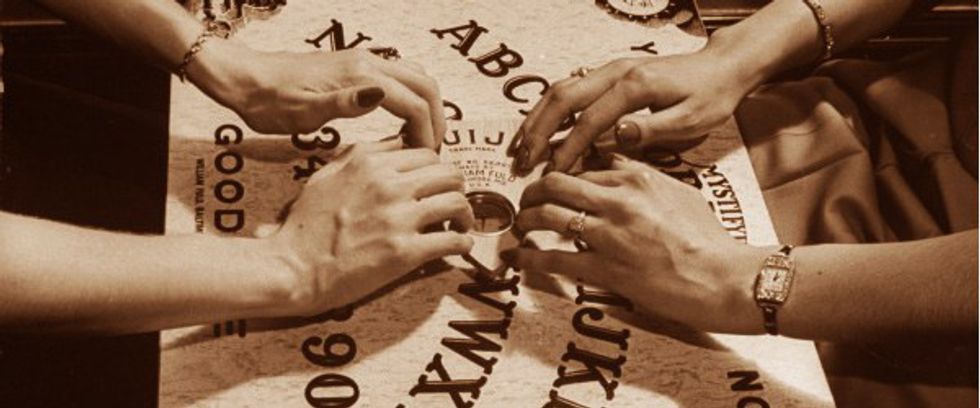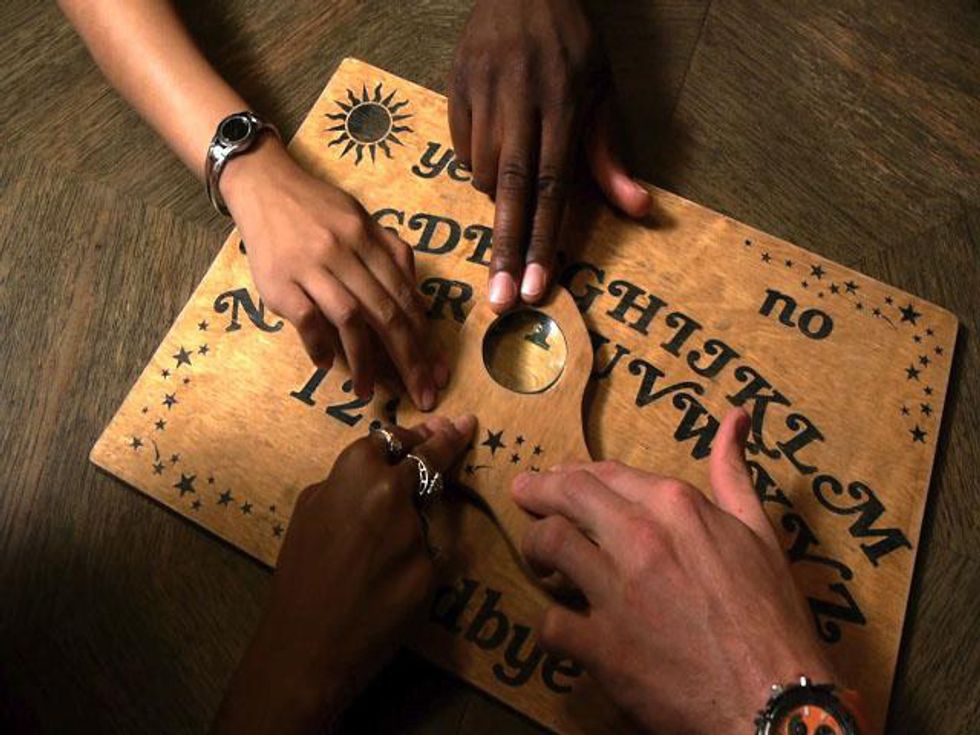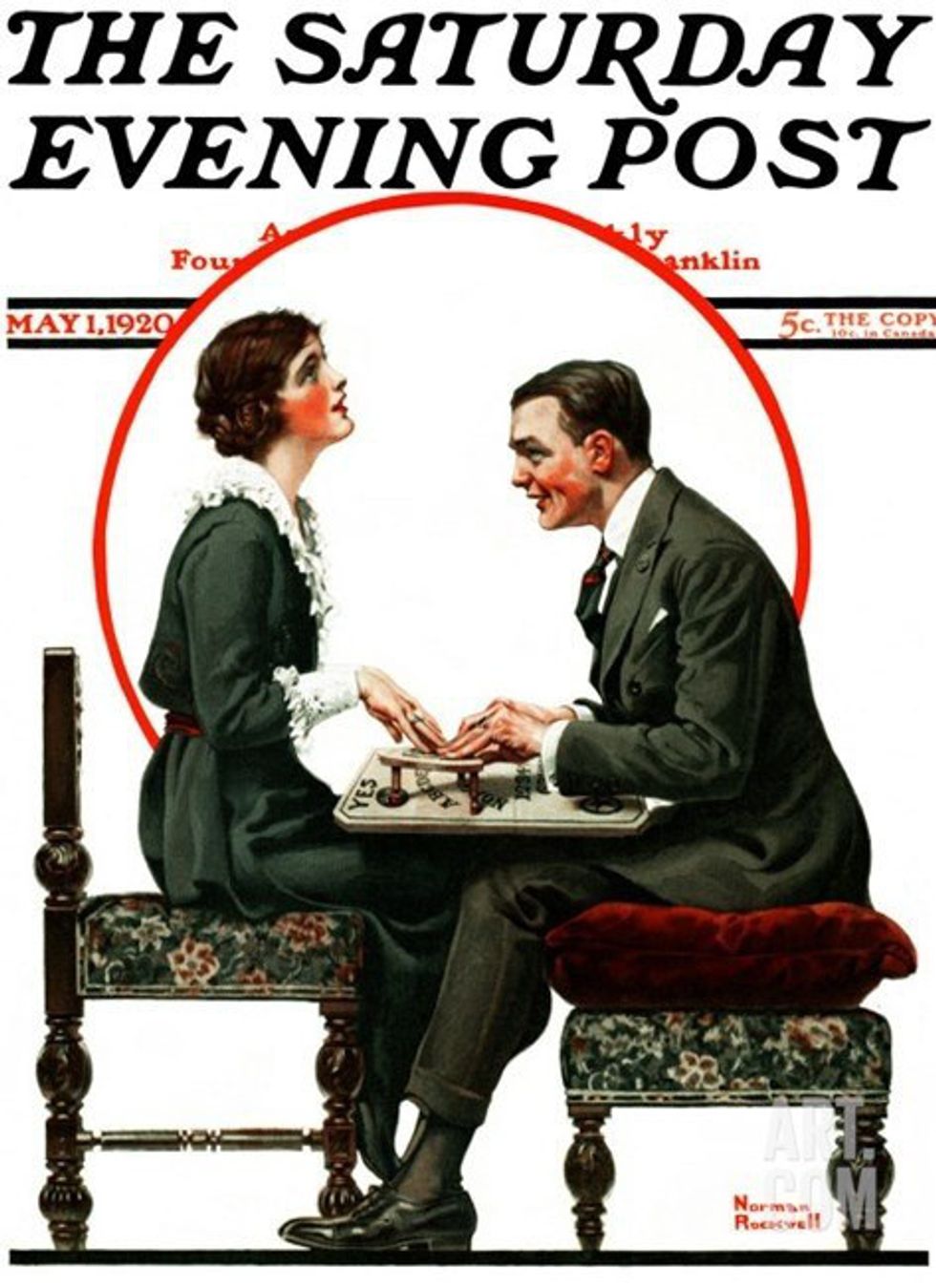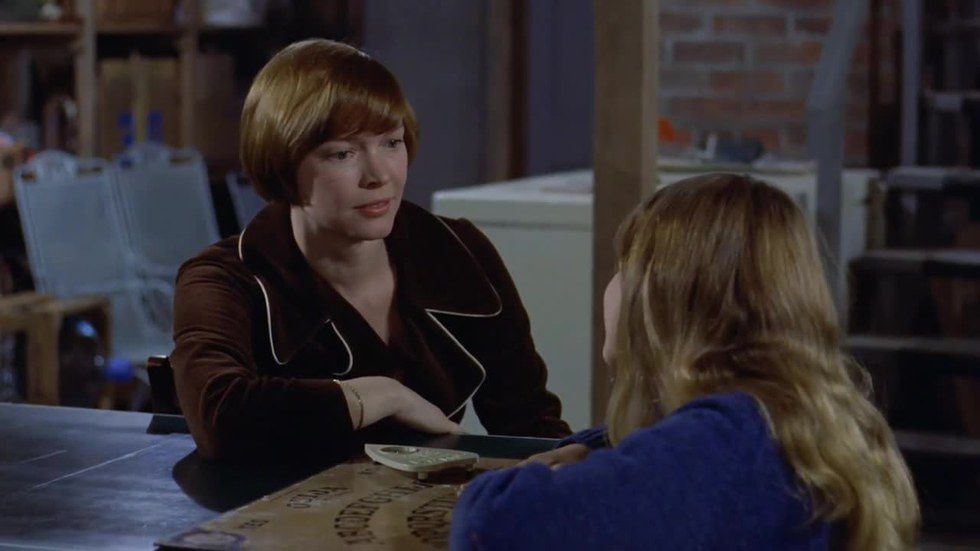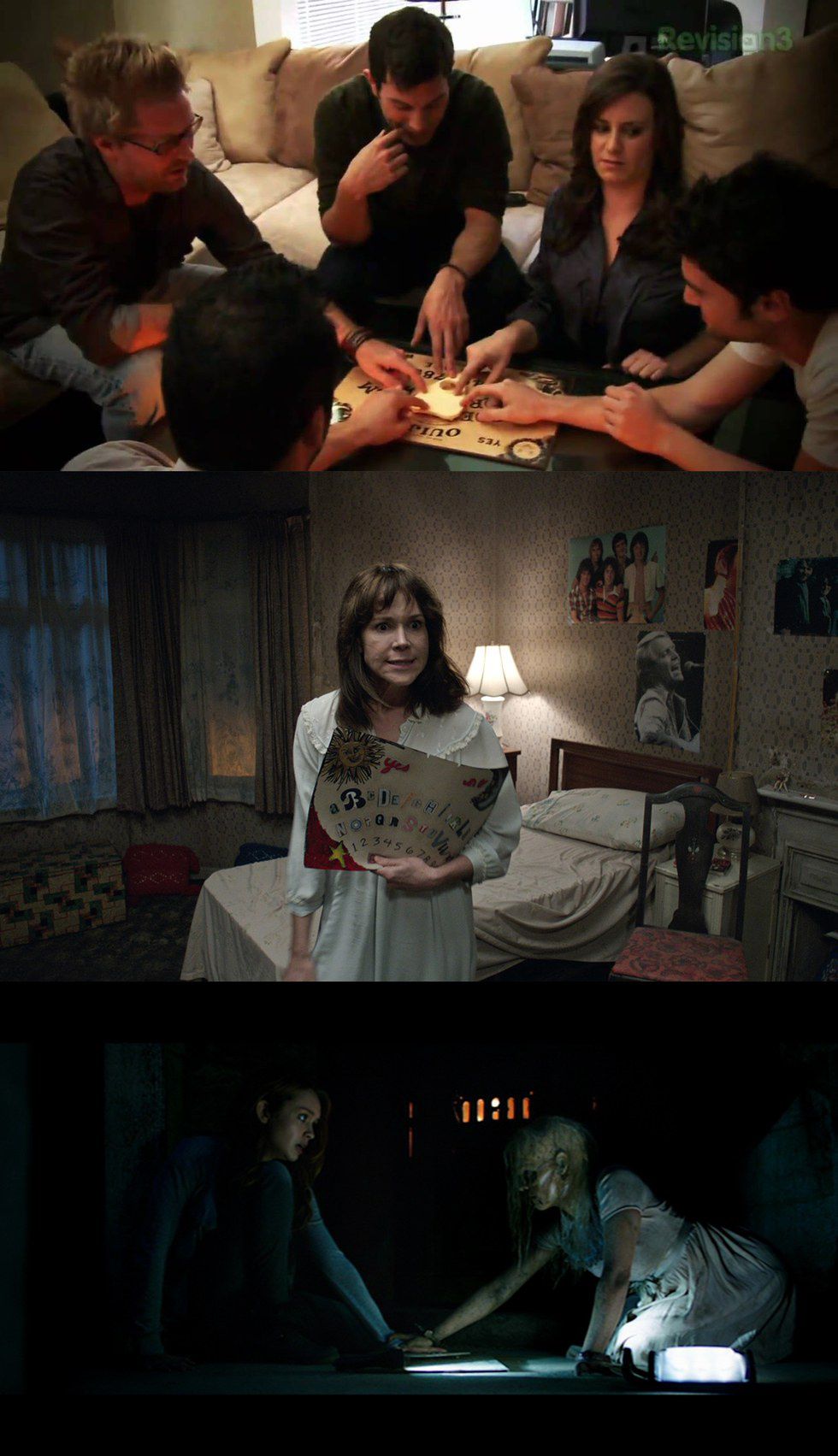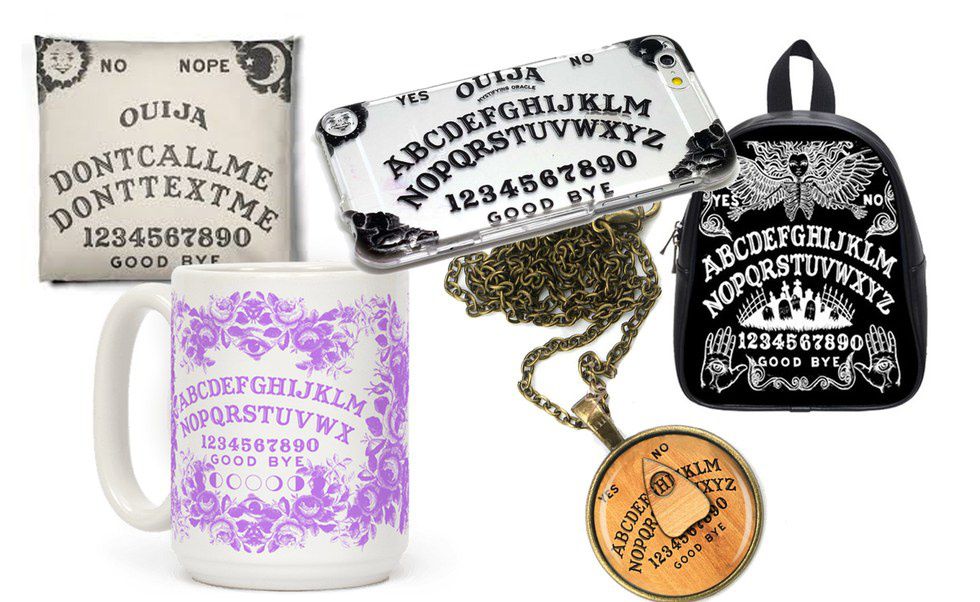Everyone gathers around, places their fingers on the planchette, and all swear they are not moving it as they watch the planchette dash from letter-to-letter, an unknown spirit communicating with the living.
Although the ouija board has been around for over 120 years, we do not know exactly where it originated. Spread by word of mouth in the 1880s, talking boards were all the rage with people communicating with the unknown.
These first boards were made by hand, often just letters, numbers, the yes, no and goodbye written on a sheet of paper, and an empty glass used as the planchette. That is, until 1890 when Charles Kennard of Baltimore, Maryland pulled together three others to create the Kennard Novelty Company, that would exclusively produce and market these talking boards.
On of the four original members of the Kennard Novelty Company was Helen Peters, the sister in law of another original member Elijah Bond. Helen Peters was known to be a powerful medium, who was able to communicate with the other side even without said talking boards. She is the one who coined the name ouija. Sitting around the table, they asked the board what they should call it “Ouija” came through, and when they asked what that meant, the board replied, “Good luck.”
These mass produced boards were made with recycled light-weight wood, and the planchet was made of wood with a small window that would tell the players exactly what letter was being channeled. And in 1981, the patent for Kennard's talking board was granted after "proving" the board worked.
From there, the boards took off. One year later, the company grew to have two factories in Baltimore, New York and Chicago, and one in London just to keep up with the demand. Historians with the Smithsonian say that it's popularity was largely due to the hard times the United States was facing. Post WWI, women were losing kids and husbands, during the Great Depression, families were left with nothing, but sales for ouija boards increased. During these times of struggle, ouija boards gave a place for belief in something, giving people a way to talk with their lost loved ones, or a way to take their minds off their current situation. These boards became a common household object by the 1920s.
Spiritualists were the main users of ouija boards, the same people who hired mediums and attended séances. That is until 1973, when The Exorcist's main character Regan becomes possesed by a demon after playing with one.
From Paranormal Activity, The Counjuring 2, and Ouija, ouija boards have been used by horror writers and lovers ever since 1973 to scare audiences, claiming they open portals to the unworldly, leaving the users open to possession by demons and unfriendly spirits. There are countless testimonies of people being attacked while playing the game, of encountering malevolant spirits and even demons coming through the board. After the 1970s, ouija boards took on a whole new meaning
Of course, as with any pop culture icon, the ouija board has been turned into countless other thinks besides a game board you can try out when you're feeling a little adventurous. With the resurgence of popularity in the odd and creepy, you can find almost anything with and ouija board printed on it.
Some do say that the original talking boards date way back in history, and there are thousands and thousands of people who claim their experiences with ouija boards are real encounters with things not of this world. We many never know if they "really work" of where these spirit boards originated, but if you're looking to buy your very own, it's only $13 at Target, Walmart and Amazon.





